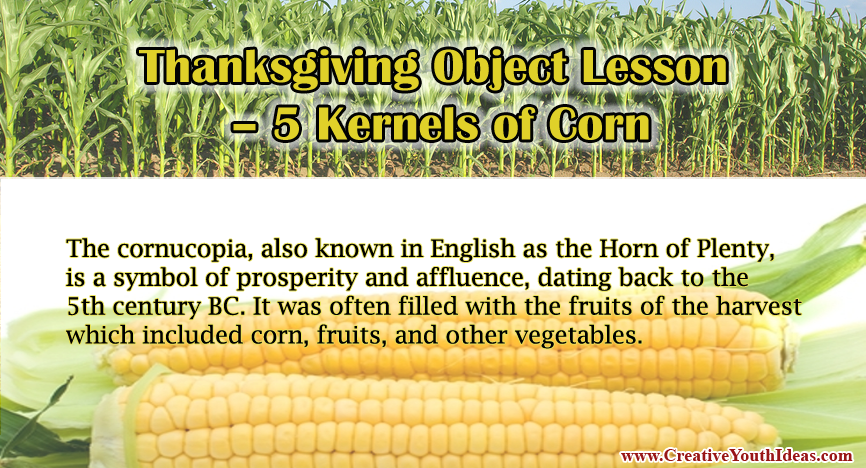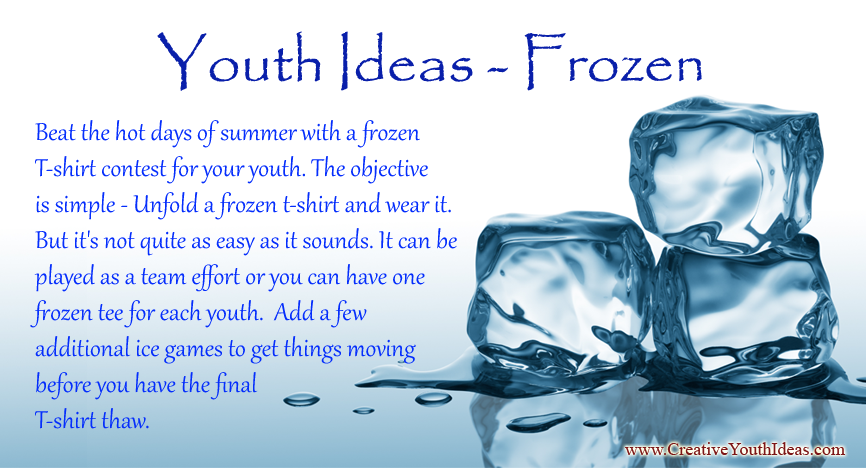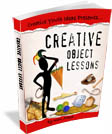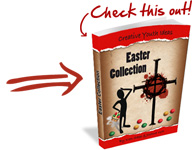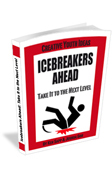The cornucopia, also known in English as the Horn of Plenty, is a symbol of prosperity and affluence, dating back to the 5th century BC. It was often filled with the fruits of the harvest which included corn, fruits, and other vegetables. Corn itself was one of the staple foods of the Pilgrims and early settlers. The native Americans taught them how to bury a fish with the kernel of corn to act as fertilizer and speed its growth. After the first year of the Plymouth colony, only half of the 102 settlers were still alive. Times were hard. At a later harvest, after a particularly tough winter it was said that each person had only 5 kernels of corn to live on each day. Yet they still gave God thanks in spite of the difficult circumstances. Here are a variety of games using corn kernels.
PLEASE SHARE THIS IDEA ON FACEBOOK – CLICK HERE
What You Need
- Dried Corn Kernels or popcorn – you can get dried feed corn like that sold for bird feeders or unpopped popcorn will also work.
Games using Corn
- Chopsticks and corn – Using a pair of chopsticks and a couple shallow bowls or saucers, each youth is given one minute to move corn from one bowl to the other using only the chopsticks. Only one hand can be used to hold the chopsticks. The youth to transfer the most corn wins.
- Corn and Straws Relay – Divide the youth into teams and give every person on a team a plastic straw and a paper cup. Place a piece of corn in the first team member’s cup. The youth must create a vacuum in the straw to pick up the corn and place it into the next person’s cup. First team to get the corn into the last person’s cup wins. If the corn is dropped on the floor, the team must start completely over at the beginning.
- Corn Bocce – On a smooth surface like a table, one youth acts as the referee, sliding out the first piece of corn. He then marks this piece with a toothpick. Contestants take turns sliding 4 different pieces as close to the referee’s mark as they can. The referee determines which piece is the closest, awarding that youth or team a point. Play until someone gets ten points
- Corn Catch – You’ll need one cornucopia or basket for each team, one bag of corn per team, and a belt or length of rope for each team. Use the rope or belt to secure the cornucopia around the waist of one player per team. Have the team member who is wearing the cornucopia stand about 7 to 10 feet away from the players who will be throwing the corn. The player wearing the cornucopia may move around to try and catch the corn as it is thrown without using their hands to deflect the corn in any way. Once everyone has thrown the corn, take the cornucopia and count the corn inside. The youth with the most corn wins.
- Corn Foosball – Have two youth stand at either end of a large table. One youth throws corn (or a plastic bag of it) to the other end of the table, and the other youth must block it from going through and making a goal. Use a dry sponge for blocking making sure it is one that will not scratch your table.
- Corn Pitching – Players takes turns pitching ten corn kernels, one at a time, into a bowl from a set distance. You might choose to have various bowls of different sizes and at different distances. Display the points based upon difficulty. Keep score of how many kernels end up in the various bowls. The winner is the one with the highest score after three rounds.
- Corn Race – Using a drinking straw, the youth must blow a kernel of corn across a table. First to blow it from one end to the other wins.
- Corn Straw Relay – Race to see who could move the most corn from the table into a bowl in sixty seconds using only a single straw.
- Kernel Relay – Mark a starting line and a finish line with masking tape on the floor roughly 15 feet apart. Set an empty bowl for each player at the finish line and a bag of corn and a spoon at the starting line. Have each player stand at a bag of corn and take the spoon in hand, placing a single kernel on the spoon. The youth will then carefully race a piece of corn to an empty bowl at the finish line, trying not to let the corn fall off the spoon. Each player will continue to race from the bag of corn to the bowl to see how many pieces of corn she or he can get into the bowl within the allotted time of one minute. If a player drops a kernel from the spoon, that youth must then run back to the bag of corn and get another piece to start over again.
- Odds or Evens – Each player starts out with the same number of corn kernels. Players rotate about the room pairing up with others. When they find a partner, one player hides a few kernels of corn in his hand. The other player must guess if the number of corn kernels is odd or even. If guessed correctly, the player can add the kernels to his own collection. Players take turns hiding and guessing, until one player has all the corn or until a specified time limit!
- Turkey Feed – Mix a few pieces of candy corn in with a bowl of corn kernels. Blindfold players and have them retrieve the candy corn from the bowl within a designate amount of time. (As a gross out variation, have them retrieve it with their bare feet then eat it.) The player that retrieves the most candy corn in the designated time limit wins.
- Where’s the Corn? – Line up three plastic cups out on a tabletop in front of a youth. Place a single piece of corn under one of the cups, allowing the player to see which cup the corn is under. Begin to change the cups’ formation around for five to ten seconds. The youth then must try to remember which cup is hiding the corn and will continue to play and collect corn until he or she chooses the wrong cup. Give the earned corn to that player, and continue on with the next player until every youth has won pieces of corn.
TAKE IT TO THE NEXT LEVEL
- In these games are you someone who plays it safe or shoots for the moon?
- Was the voyage to the new world by the pilgrims a safe bet or a big risk?
- What were some of the potential risks? Potential rewards?
- What were some of your strategies in these games?
MAKE IT SPIRITUAL
Some people play it safe in life. Others take risks. Most of the time we evaluate if the potential reward is worth the risk. For the Pilgrims, coming to America was a great risk. But the lure of religious freedom was worth the risk. Many of them lost their lives in pursuit of the opportunity to freely worship God as their conscience dictated. After the first year of the Plymouth colony, only half of the 102 settlers were still alive. Times were hard. Later during a particularly tough winter is was said that each person had only 5 kernels of corn to live on each day.
Yet in spite of their hardships, they gave thanks to God. Eternal blessings outweighed the physical ones. There may be times when we do not have much, but to have a relationship with God is worth any cost and any hardship! They made a choice, a decision to pursue God at any cost.
MAKE IT PRACTICAL
- What risks are worth the reward of knowing Jesus as Lord and living for him?
- Is Christianity a risk? Why or why not?
MAKE IT PERSONAL
- Has God called you to do something out of the ordinary?
- To what has God called you?
- What are you willing to risk for religious freedom?
CLOSING ACTIVITY
Just as a single grain of corn has the potential for an abundant harvest, even one decision for God can lead to a harvest of blessings in your life. What choice is God calling you to make today? Take a kernel of corn home as a reminder of a decision God has called you to make for him regardless of the risk.
SCRIPTURES
- 1 Thessalonians 5:18 – “give thanks in all circumstances; for this is God’s will for you in Christ Jesus.”
- Ephesians 5:20 – “always giving thanks to God the Father for everything, in the name of our Lord Jesus Christ.”
- Philippians 4:6 – “Do not be anxious about anything, but in every situation, by prayer and petition, with thanksgiving, present your requests to God.”
PLEASE SHARE THIS IDEA ON FACEBOOK – CLICK HERE
 Creative Holiday Ideas
Creative Holiday IdeasGames and Activities in Celebration of common Holidays.
Creative Holiday Ideas has over 300 pages of ideas to help you plan not only your next Fall Festival or Thanksgiving Celebration, but also most of the other common holidays. If you’ve ever wondered what you’re going to do for the holidays and how you’re going to do it, this resource is for you.

